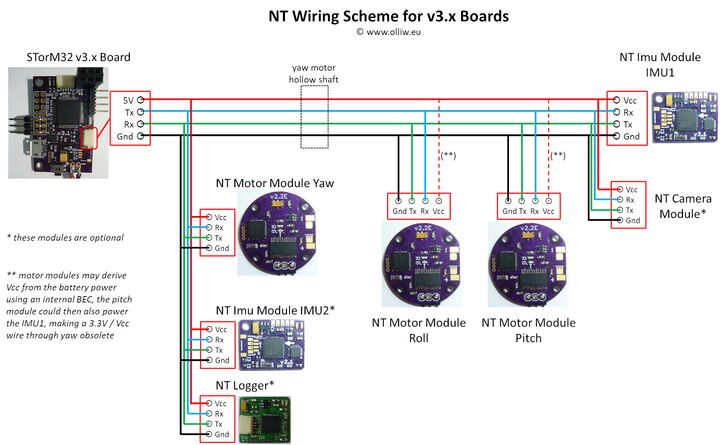What is STorM32 NT?
STorM32 NT refers to the use of the NT bus for communication between the STorM32 gimbal controller and its peripherals, such as IMU modules (NT stands for New Technology).
A major drawback of the first-generation STorM32 was its reliance on the I2C bus for communicating with the IMU(s), and the bus's sensitivity to electrical noise from, e.g., the motors (see the I2C Error Compendium). The introduction of STorM32 NT provided an ultimate solution by replacing the I2C bus with the NT bus, which hardware-wise is a standard serial UART, but with a quite high baudrate (2.000.000 bps). Since the UART is low impedance and push-pull the disturbance sensitivity is massively lower than for I2C, making it practically error free. Furthermore, even if a transmission error occurs, the STorM32 controller has no difficulties to recover from it, unlike with I2C.
The NT concept provides additional cool advantages:
- NT modules can be daisy-chained, which can result in quite clean wiring, and helps tremendously with e.g. slip rings.
- NT modules can be replaced easily, resulting in extraordinary flexibility in the configuration.
- Simplifies technological advances: If you need encoders, then build a FOC motor driver module (this has happened! See What is T-STorM32?). If you need a high-quality ultra-low drift IMU module, then build a high-quality ultra-low drift NT IMU module. If you need a high-power NT motor module, then build a high-power NT motor module. And so on.
Example Wiring Schemes
A typical wiring scheme for a v3.3 or v6.2 STorM32 board can look as this:
